
Rod Hunt is a talented illustrator that creates amazing retro-isometric styled vector landscapes and characters. He has an extensive portfolio featuring work from Maxim, Vodafone, BBC, and many more. Rod has been kind enough to provide Vectips with an interview, so read on to learn about his Illustrator experience and industry insights.
About Rod Hunt
Rod Hunt is a London based Illustrator & artist who has built a reputation for retro tinged Illustrations & detailed character filled landscapes for UK & international clients spanning publishing, design, advertising & new media, for everything from book covers to advertising campaigns, theme park maps & even the odd large scale installation too! Rod is also the illustrator behind the new Top Gear book “Where’s Stig?” published by BBC Books in September 2009.
Rod Hunt Around the Web
Interview
Hey Rod, thanks for taking the time to provide Vectips with an Interview! To start, could you tell us about your design and illustrating background and what made you become a designer and illustrator?
I’m a London based Illustrator/designer who has built a reputation for retro tinged Illustrations & detailed character filled landscapes with UK & international clients in publishing, design, advertising & new media, for everything from book covers to advertising campaigns, & even the odd large scale installation too!
Some of my many clients include Barclays, BBC, Computer Arts Magazine, Dorling Kindersley, The Economist, FHM, Maxim, The Observer, Orange, Top Gear & Vodafone
I’m also currently Deputy Chairman of the UK Association of Illustrators. The AOI was established in 1973 to advance and protect illustrator’s rights and encourage professional standards
Originally I was from near the rural town of Bridport in the UK county of Dorset. For the last 12 years I’ve lived in Greenwich, London & where I also have my studio by the River Thames.
I was always a prolific drawer when growing up, but I really didn’t consider art as a career until I was 17. Originally I was planning on pursuing biochemistry & horticulture, & was studying towards that. I was studying art just for fun. But the realization grew on me that I wasn’t really enjoying studying the sciences any more & as I spent all my time drawing, art college beckoned.
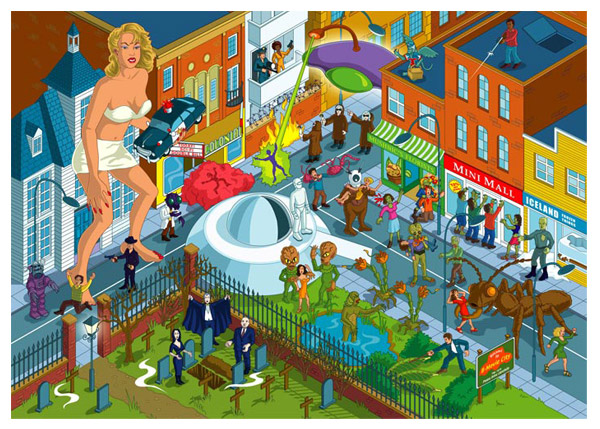
What is your favorite and least favorite thing about the design and illustrating industry?
My favourite thing is getting to work on challenging creative projects with great people & seeing the end results in the public domain.
My least favourite thing is dealing with unreasonable contracts & attempted copyright grabs from some clients.
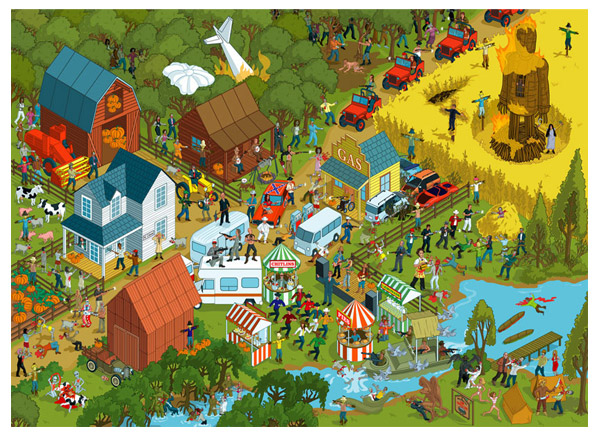
You have worked for many clients ranging from Maxim, Vodafone, FHM, Computer Arts, and more. Do you have a favorite project? Any project you hated?
One of my most challenging & exciting projects was a huge interactive environmental installation for the award winning Lightbox museum & Gallery in Woking, UK. The project stretched me to the limit due to the involved design process, it’s physical size & the immense amount of detail.
It’s a graphic lightbox covering a final area of 5m (w) x 2m (h). The content is based on what Woking is doing to support environmental issues/concerns within the city. The visitor is given a selection of push buttons with facts/questions that light up specific activities within the illustration. The illustration needed to closely represent the content and convey the identity of Woking and some of its key features.
But the project I’ve just completed ranks up there with my all time favourites. For the first seven months of this year I was working with the BBC’s hit TV show Top Gear on Where’s Stig? a 40 page book completely illustrated by me. It features the mysterious Stig, “Top Gear”‘s resident racing driver and one of the most popular members of the “TG” team. But you’ll have to work hard to find him in scenes based on the show. It’s been a challenging & creatively rewarding project, & great to solely concentrate on one huge project for so long. It’s in the shops on 17th September 2009.
I tend not to dwell on the commissions I haven’t enjoyed.
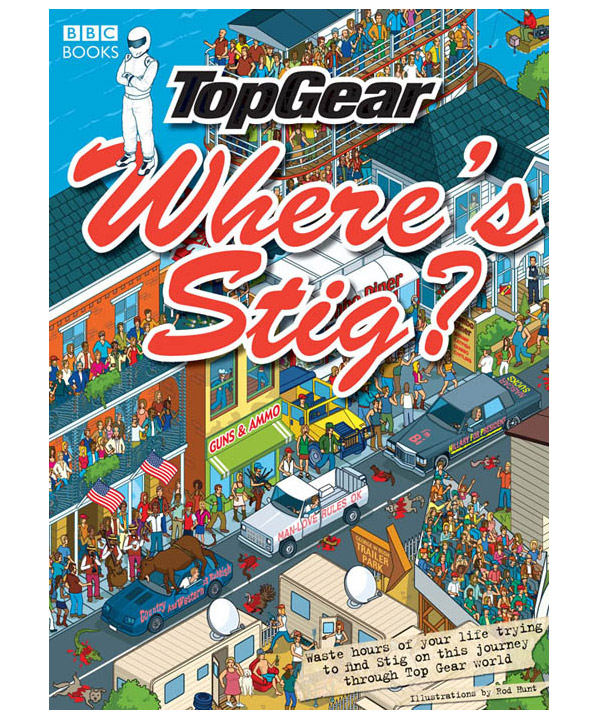
Could you describe your typical workflow for an illustration? How long does it take to complete some of your complex illustrations?
All my work is produced digitally, but before I go near the computer I start doodling ideas and compositions in an A5 sketchbook with a pencil or biro. These are very quick and throwaway. Once I worked out the rough idea and composition & gathered any visual reference I might need, I work on a larger finished pencil drawing, which I then use as a guide for drawing the final artwork with a graphics tablet in Adobe Illustrator. For me it’s important to keep the hands on feel with my work, despite producing the final artwork on the computer. At the end of the day the computer should just be seen another way of making a mark on a page.
It’s also important to give myself enough thinking & doodling time at the beginning of a project before producing a finished rough drawing. That’s where the real hard work is done & is the foundation of a great piece of work. After that, it’s producing the final artwork in Illustrator & usually there’s not a great deal of change compositionally from rough to final artwork.
Some of my more complicated work can take some time to complete. For instance my illustration for the Chessington World of Adventures 2009 visitors map took around 8 weeks in total, from briefing, rough drawings to the final artwork, which took around 3 weeks to complete.
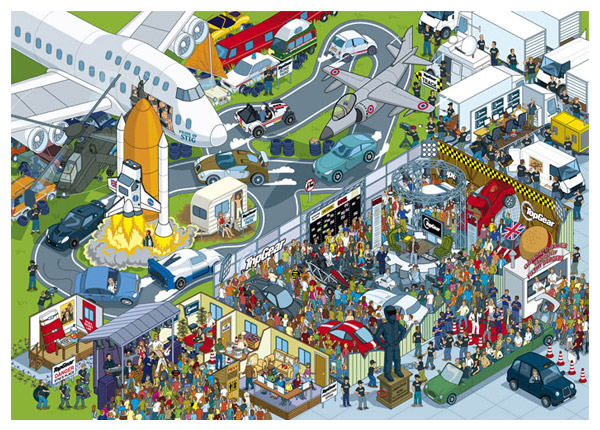
Why did you choose Illustrator and vector art as a medium?
I previously used to paint my work in acrylic paint, but around 2000 I was tired of the way I was working & wanted my work to feel more graphic, feeling I needed a new challenge. Initially I start experimenting using Photoshop, but ended up trying to paint with it & not achieving the feel I wanted. So I tried Illustrator, which was a pretty alien way of working initially, but gave me the more graphic approach I wanted. And the ability to edit, scale & redraw completely changed my working process, freeing me from the definitive marks of physical artwork.
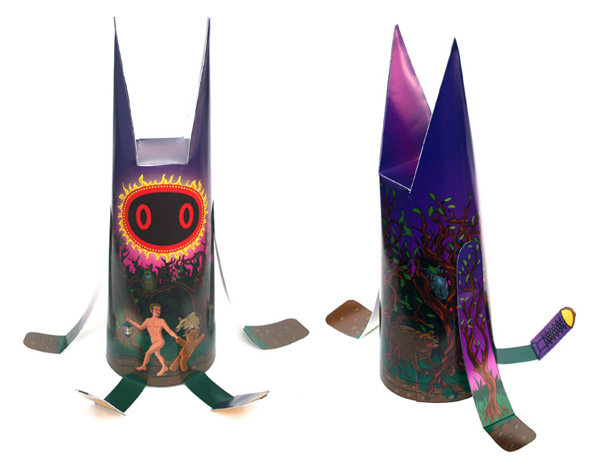
What is your favorite Illustrator Tool and why?
The most useful tool for me is Undo. Having the ability to change my mind & go back a few steps at will is hugely powerful. Can’t imagine doing with out it & going back to painting.
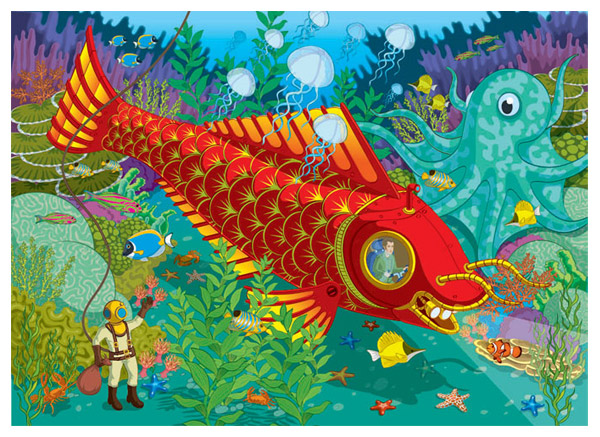
What is your favorite Illustrator tip, trick, or technique?
I tend to use Illustrator almost as a straight drawing tool & use effects sparingly. The biggest thing for me is making working in Illustrator a smooth & economical process, so it’s essential to learn keyboard shortcuts. I also zoom in & out of the artwork a lot while I work on a piece, so have programmed the side key on the Wacom pen to be zoom in/out keys.
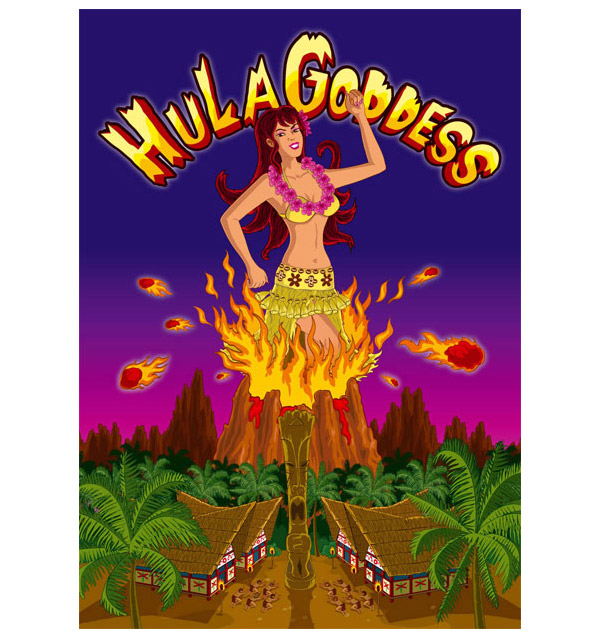
Have you upgraded to CS4? If you have upgraded, what is your favorite feature? If not, why haven’t you upgraded.
This year I upgraded to CS4 as well as to a new 24inch iMac. Previously I was working on a G5 Mac with CS1. I’ve not had the time yet to really explore the new features in CS4 yet.
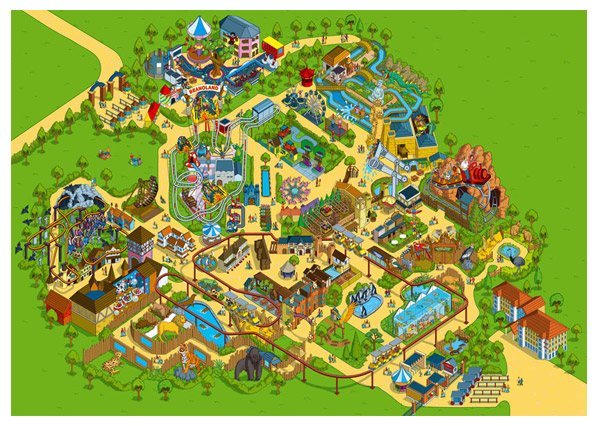
What aspects of your designs and illustrations reflect parts of your personality?
Probably patience, a slightly obsessive mind & my sense of humour.
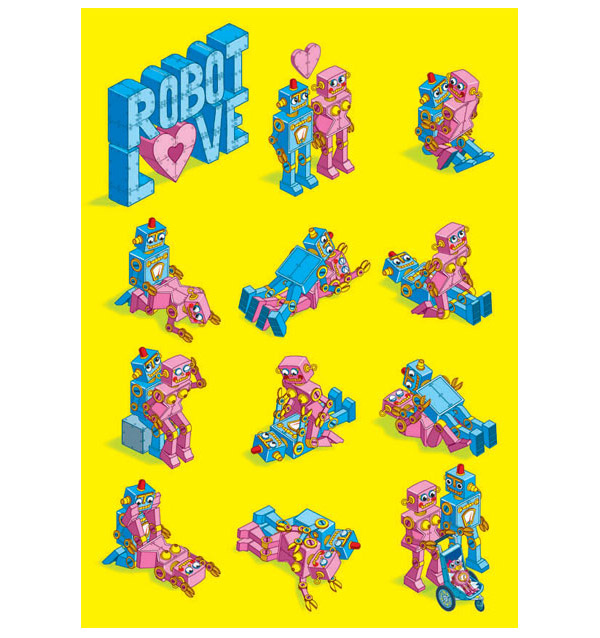
For those who haven’t heard of the Association of Illustrators (AOI), could you describe what it is about? What are your duties as the Deputy Chairman of the UK Association of Illustrators?
The AOI was established in 1973 to advance and protect illustrator’s rights and encourage professional standards. The AOI is a non-profit making trade association dedicated to its members’ professional interests and the promotion of illustration.
Members consist primarily of freelance illustrators as well as agents, clients, students and lecturers. As the only body to represent illustrators and campaign for their rights in the UK, the AOI has successfully increased the standing of illustration as a profession and improved the commercial and ethical conditions of employment for illustrators. The Association was responsible for establishing the rights of illustrators to retain ownership of their artwork & the AOI aims to expose and resist rights abuses and exploitative practices within the industry whenever they occur.
I’ve been on the Board of Directors of the AOI for about 6 years & was elected as Chairman this August. I feel greatly honoured to be elected as the new Chairman of the AOI, a hugely important role for the Association and for British illustration. The AOI Board is responsible for the strategic direction & good governance of the organisation, & ensuring the AOI’s members interests are looked after. I also chair the committee for the AOI’s prestigious Images, best of British Illustration Awards & exhibition, & only jury selected illustration awards book in the UK.
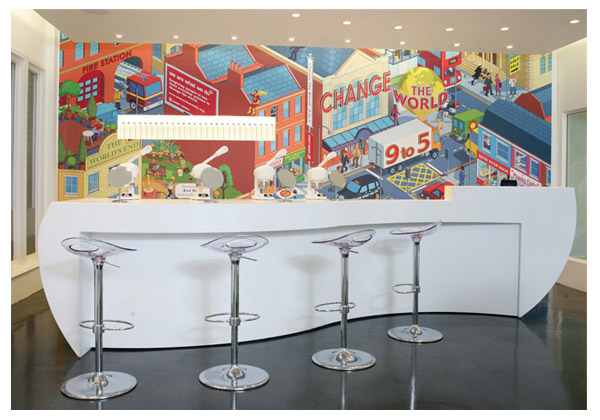
Are there any challenges in creating artwork on a large scale, such as the the installation for the Lightbox Museum and Gallery in Woking, UK?
Working at such a large scale is indeed challenging, more so as I drew the final artwork at the actual size of 2m x 5m. One of the main issues is keeping track of all the detail & I spent many hours checking over the artwork for mistakes & oversights before it went to print. Even then, a couple of minor things slipped through.
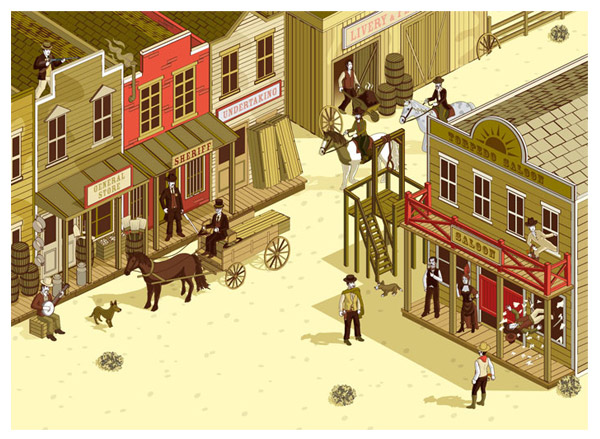
What are your favorite sources of inspiration?
I think it’s important to indulge your personal interests in your work & create your own unique voice, as that is what will set you apart from everyone else. I love old illustration from 50’s & 60’s advertising, Pulp Fiction covers, album sleeves, old posters, etc. Having a sense of history & what’s gone before is very important, as you can’t learn from just what everyone is doing today.
I also grew up with Science Fiction films like Star Wars, The Day the Earth Stood Still & Forbidden Planet, & old TV shows like Flash Gordon & Star Trek. Their design aesthetic definitely stayed with me & their visions of the future are still what I think the future should look like. And of course the robots were always cool! I also owned a few old tin robot toys as a kid, which were amongst my favorite toys.
So things that inspire me, in no particular order: Edward Hopper, comics, 2000AD/Judge Dredd, pulp fiction covers, sci-fi, Terry Gilliam, Tim Burton, robot toys, retro 50’s/60’s/70’s advertising & graphics, architecture, animation, film, Mad magazine…
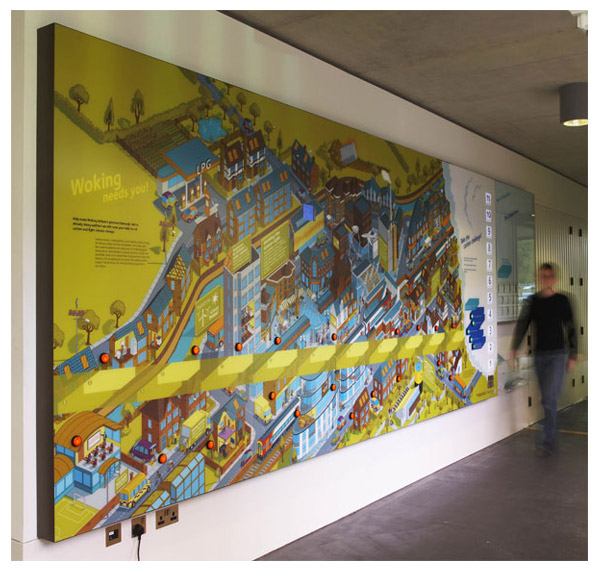
Thanks again for the interview! Is there advice any that you could give for aspiring and professional illustrators and designer?
Get out there and get your work seen by as many people as possible. You should never be afraid to show people your work. You maybe the best designer/illustrator in the world, but if no one sees your work, you won’t get commissioned
Perseverance. It can take quite some time to get really established.
I’d recommend joining the UK Association of Illustrators (AOI). They’re constantly campaigning to protect all illustrator’s rights, and if you need advice on pricing commissions, contracts, promotion, etc, it really pays to get help from the experts.
Maintain control over your Copyright in your Illustrations. There are very few occasions that clients need to own the Copyright in your work. Your body of work is your livelihood, and you should be entitled to the financial benefits of your talent and hard work.
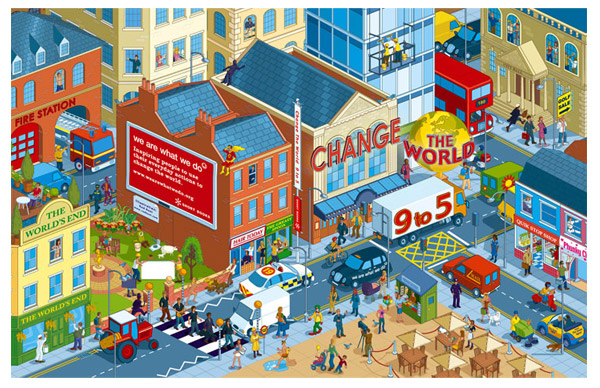








Corporate Video Production Company in Bangalore and Explainer, Animation Video Maker in Chennai
Thanks for the sharing information on corporate video production, nice blog.
lol some of the opinions readers post are a bit spacey, there are times i contemplate whether they in truth read the pieces and items before leaving a comment or if perhaps they simply look at the titles and write only the first thought that comes to mind. anyways, it is pleasurable to read through clever commentary every now and then as opposed to the exact same, old oppinion vomit which i regularly see on the internet i’m going to have fun with a few rounds of facebook poker so long
lol ROBOT love.. that is wat u can called SAFE PORN lol
Great interview, I love how detailed his work is.
brilliant, invaluable information by an industry leader. thanks to the author of the site and to rod hunt for sharing his experience. definitely an insight!
Thank you for this great interview. I love the details in his work. Another talented human being!
cool!
i loved his style